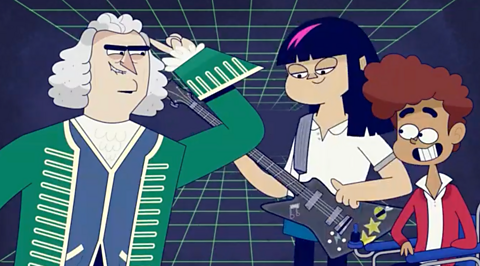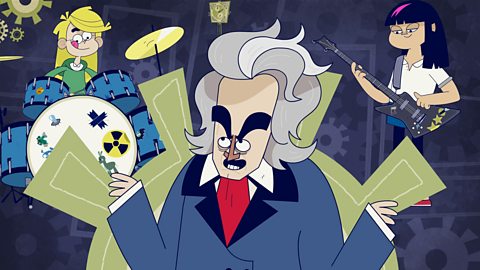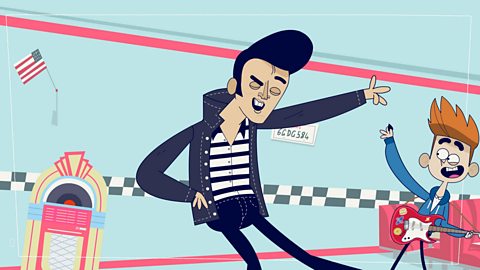What is rhythm?

A rhythmA pattern of sounds of different durations. is a pattern of sounds of different lengths.
A pulseA steady, regular beat that continues throughout the song. is the steady beat that runs through a piece of music.
Pulse and rhythm are different. In a pulse all the sounds are the same length. However, if you combine long and short sounds, you create a rhythm.

Watch: Forbidden rhythms
Let's warm up and get in time, by playing a game of forbidden rhythms. Join in and clap along.
Naomi: Hi Mrs Thomas, Cloggs has given me the all clear to take on advanced rhythms. Where do we start?
Mrs Thomas: Well, with a warm-up. I'll clap a rhythm and I want you to copy it.
Naomi: Easy.
Mrs Thomas: Easy OK, let's make it a little trickier by adding a forbidden rhythm.
[Thunder]
Naomi: Ooh. What's a forbidden rhythm?
[Thunder]
Mrs Thomas: Well, the forbidden rhythm
[Thunder]
Okay. That's enough of that now.
The forbidden rhythm is the one rhythm that you should not copy. It sounds like this.
Don't clap this one back.
Naomi: Don't clap this one back.
Oh, no. I just clapped the forbidden rhythm.
Mrs Thomas: Oh. Don't worry. We haven't started yet.
Let's have a pulse to keep us in time.
Naomi: You can join in as well.
Mrs Thomas: I'll count us in one, two, three, four.
[claps]
Oh, well done! You didn't let the forbidden rhythm catch you out.
Naomi: No. How about you? Did you clap the forbidden rhythm?
Advanced rhythms
Rhythms become more advanced when they move away from the strong, regular beat of the pulse.
To demonstrate, listen to this short piece of music. The pulse is shown by the numbers at the top.
As you can hear, all of the notes are either on the beat or occasionally on the offbeatWhen the notes are played between the beat. in between. This is a simple rhythm.
Now listen carefully to this more advanced rhythm. The numbers at the top are the pulse. You can hear it being played on the clavesA percussion instrument consisting of a pair of wooden sticks..
This time, you can hear that not all of the notes fall on the beat or even the offbeats in between.
You can create advanced rhythms by combining notes and rests of different durationThe length of time each note is played for..
What is syncopation?
syncopationSudden changes in the rhythm of a piece of music. is the word we use to describe music that emphasises the offbeats, instead of on the beat.
Listen to this example. You can hear the pulse played by the claves and the syncopation of the drum beat around it.
Syncopation can add excitement and surprise to a piece of music. By unexpectedly stressing the offbeats, it adds variation and grooveThe feel of the rhythm in a piece of music. to the music.
Activities
Quiz
Bitesize Primary games. gameBitesize Primary games
Play fun and educational primary games in science, maths, English, history, geography, art, computing and modern languages.

More on Playing and Performing
Find out more by working through a topic
- count5 of 12

- count6 of 12

- count7 of 12

- count8 of 12
